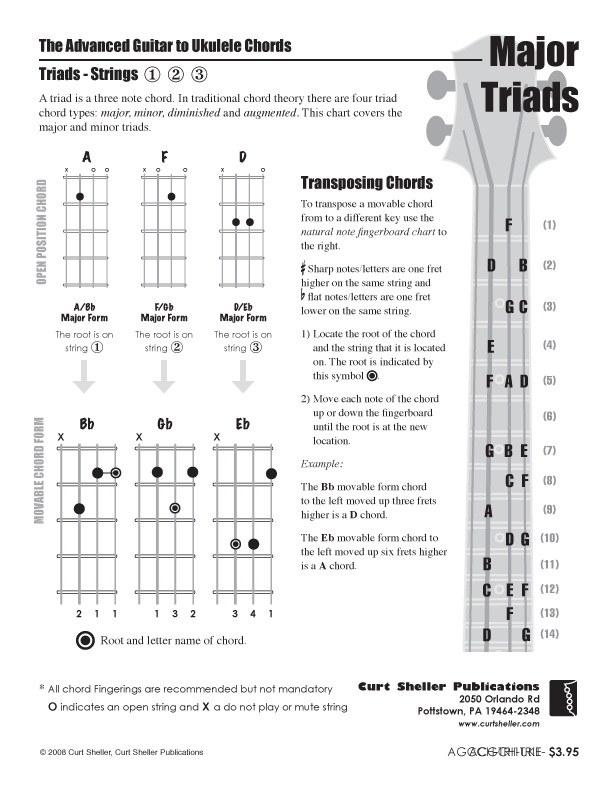
In music or music theory, a triad is a three-note chord (or, more generally, any set of three notes, pitches, or tones). Triads can be used harmonically, as chords and melodically, as single notes. These lessons explore both. Using triads as chords like any other chord and using triads as a basis for creating melodies and improvising.
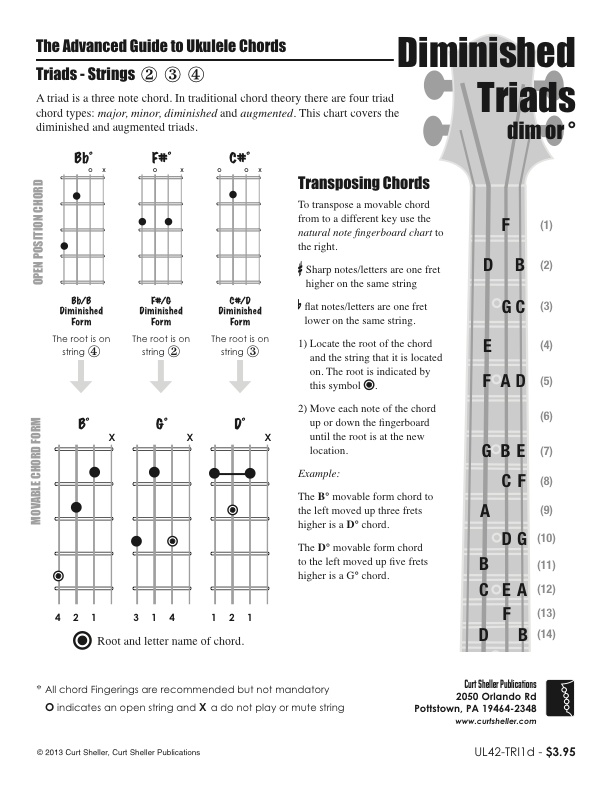
A triad is a three note chord. In traditional chord theory there are four triad chord types: major, minor, diminished and augmented. This lesson covers the augmented and diminished triads on strings 2 3 4.
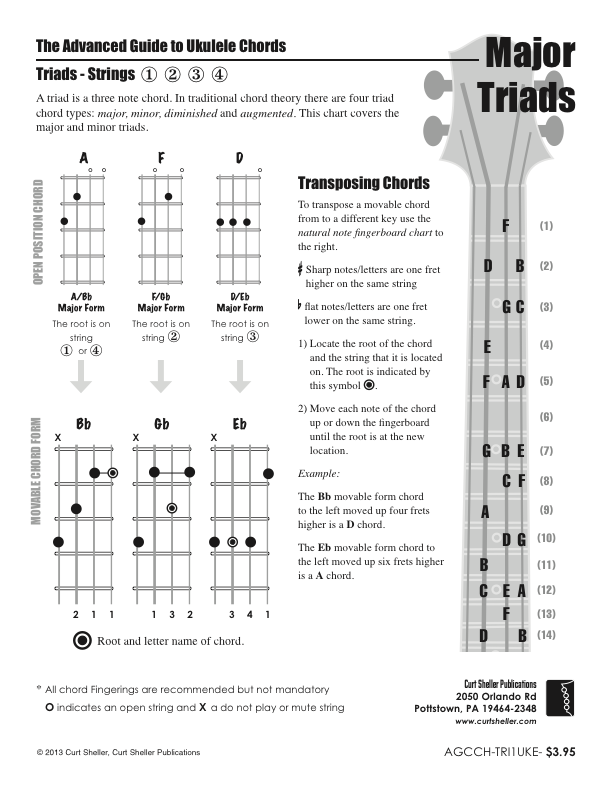
A triad is a three note chord. In traditional chord theory there are four triad chord types: major, minor, diminished and augmented. This chart covers the major and minor triads on strings 1 2 3 4.
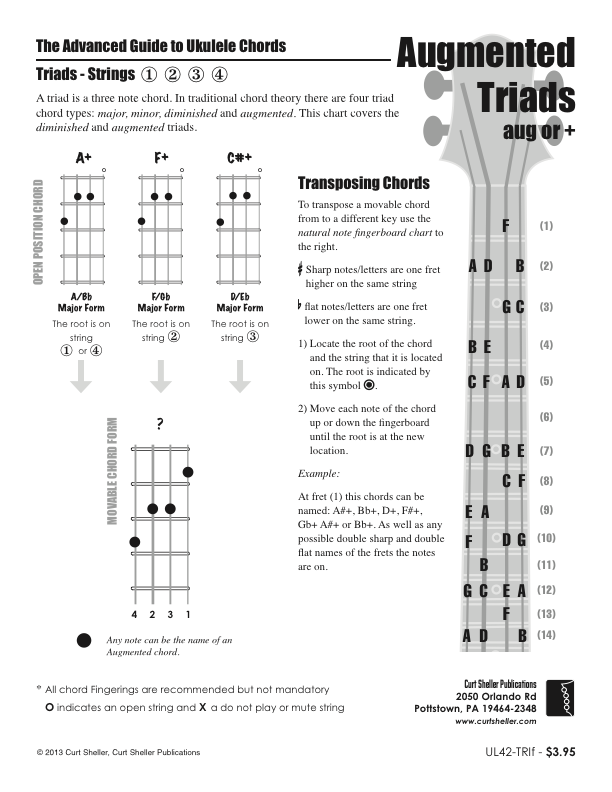
A triad is a three note chord. In traditional chord theory there are four triad chord types: major, minor, diminished and augmented. This lesson covers the augmented and diminished triads on strings 1 2 3 4.
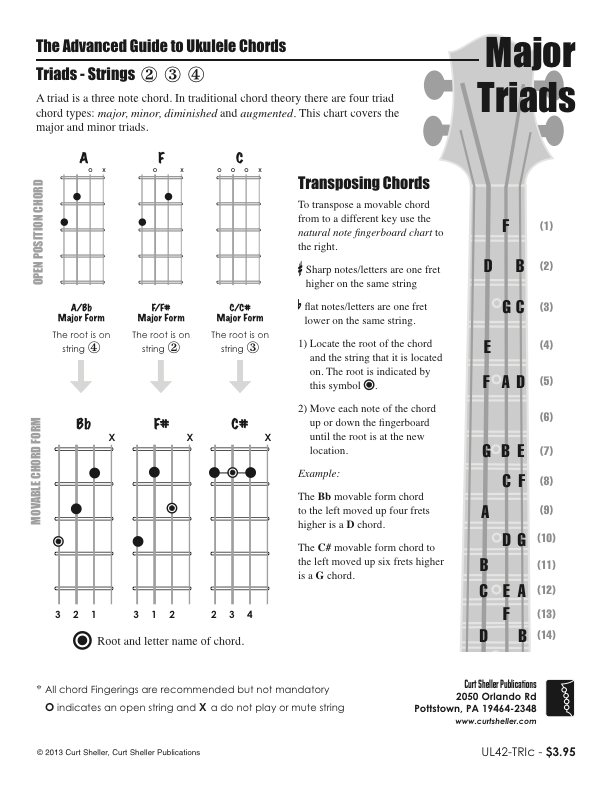
A triad is a three note chord. In traditional chord theory there are four triad chord types: major, minor, diminished and augmented. This chart covers the major and minor triads on strings 2 3 4.
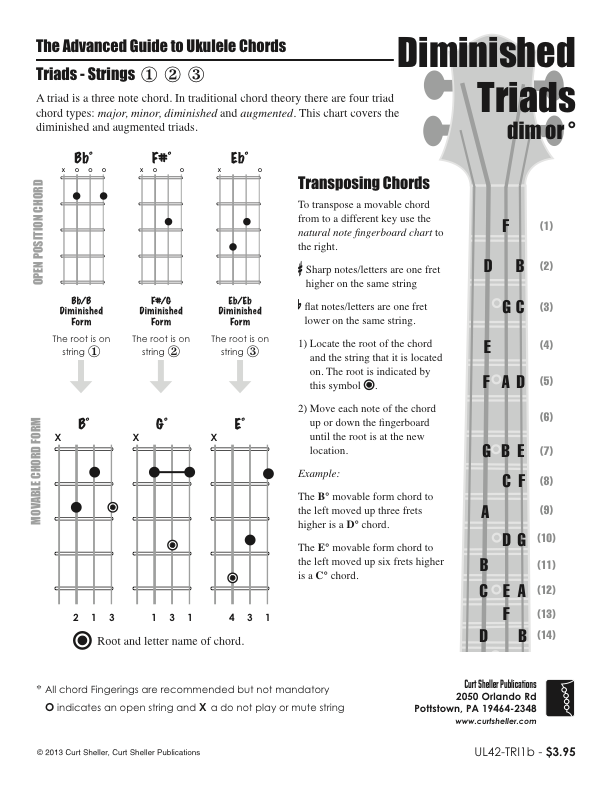
A triad is a three note chord. In traditional chord theory there are four triad chord types: major, minor, diminished and augmented. This lesson covers the augmented and diminished triads on strings 1 2 3.

A triad is a three note chord. In traditional chord theory there are four triad chord types: major, minor, diminished and augmented. This lesson covers the major and minor triads on string 1 2 3.
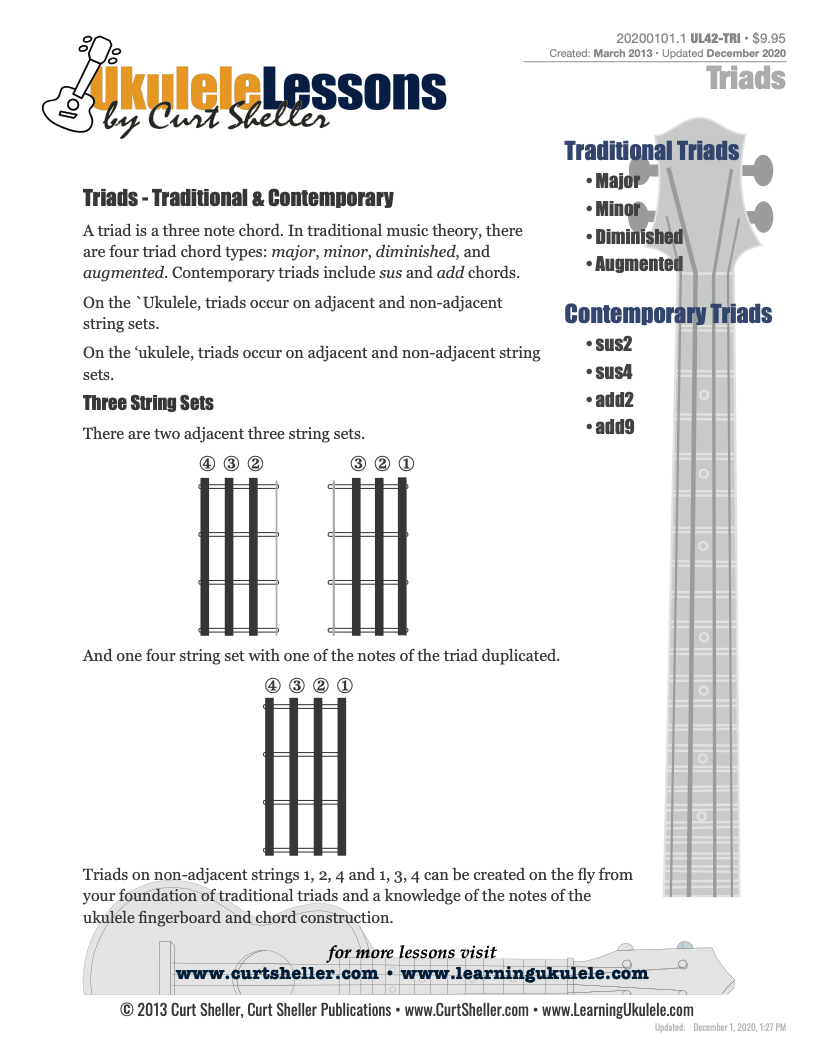
A "Triad" is a three note chord. In traditional music theory, there are four triad chord types: major, minor, diminished, and augmented. Contemporary triads include sus and add.
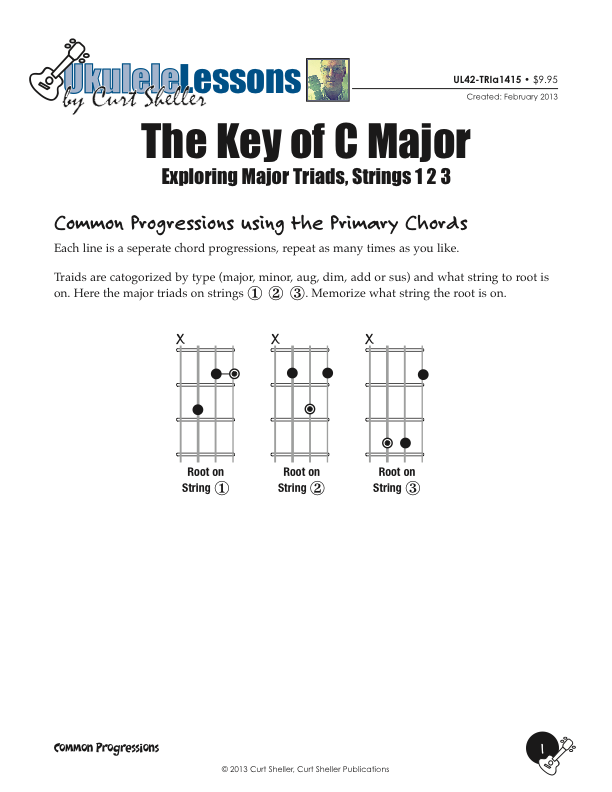
Building major triads using the primary chords of C major. Triads are one of the first chords that really bring to light the need to know the notes of the neck. This lesson shows the three voicings and the solutions for playing a common "1 4 1 5" progression using C, F and G triads on the string 1 2 3 set.

Exploring major triads using the primary chords of G major. Triads are one of the first chords that really bring to light the need to know the notes of the neck. This lesson shows the three voicings and the solutions for playing a common 1 4 1 5 progression using G, C and D triads on the string 1 2 3 set.
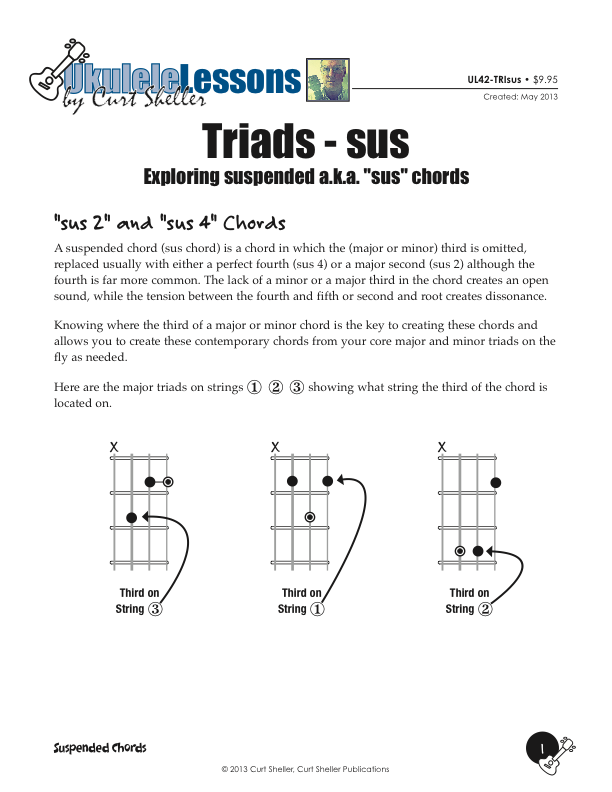
A triad is a three note chord. In traditional chord theory there are four traditional triad chord types: major, minor, diminished and augmented. And four contemporary triad chord types: sus2, sus4, add2 and add9.
This series of lessons explores contemporary suspended or sus chords using triads cover is earlier lessons of this series.

A triad is a three note chord. In traditional chord theory there are four traditional triad chord types: major, minor, diminished and augmented. And four contemporary triad chord types: sus2, sus4, add2 and add9. This series of lessons explores contemporary add chords using triads covered in earlier lessons of this series.

Using Major Triad Arpeggios - Plus One for Creating Melodic Solos. With chord tones, the notes of a chord playing a predominant role in writing melodies and in improvised melodies. The triad plus one additional note is a great melodic device for creating melodies - either written or improvised.
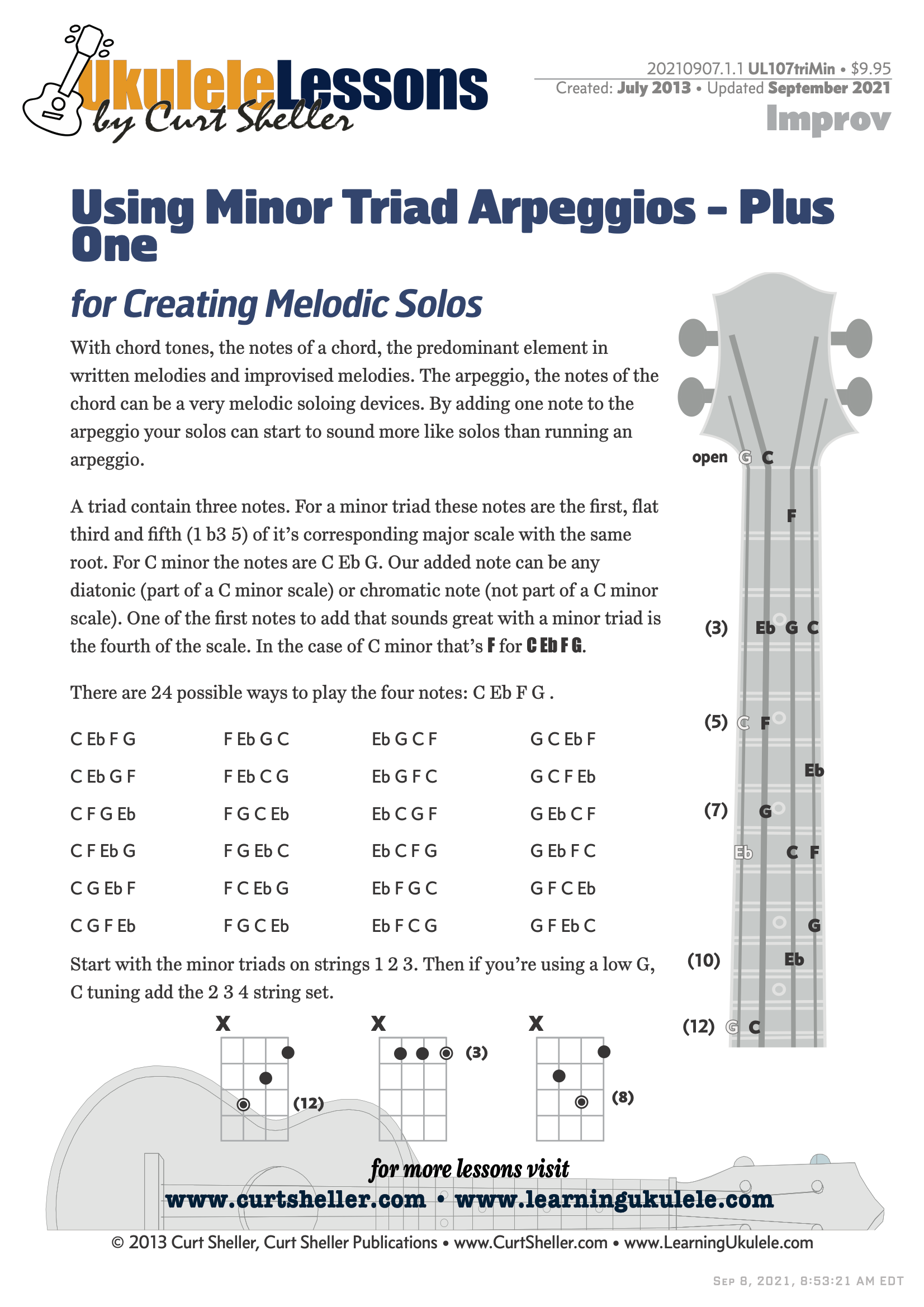
Using Minor Triad Arpeggios - Plus One for Creating Melodic Solos. With chord tones, the notes of a chord playing a predominant role in writing and in and improvised melodies. The triad plus one additional note is a great melodic device for creating melodies - either written or improvised.
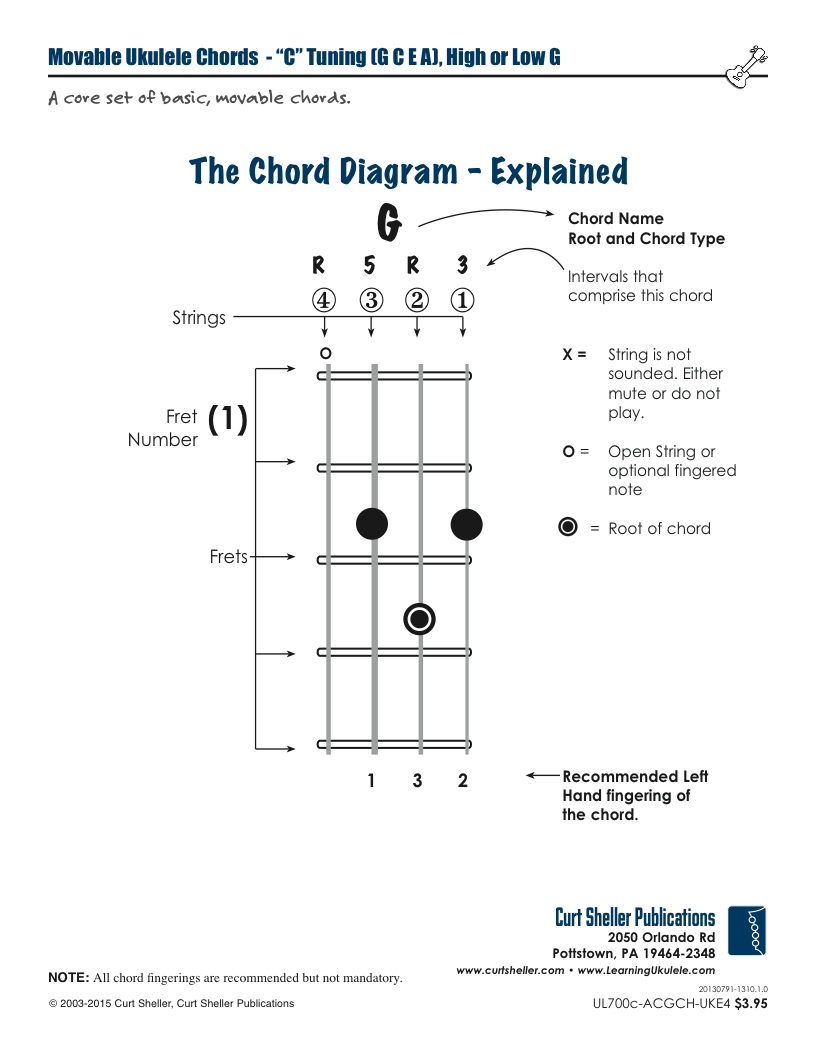
These chords are movable chord forms based on core 4-part seventh chords and triads with duplicated and/or omitted notes.
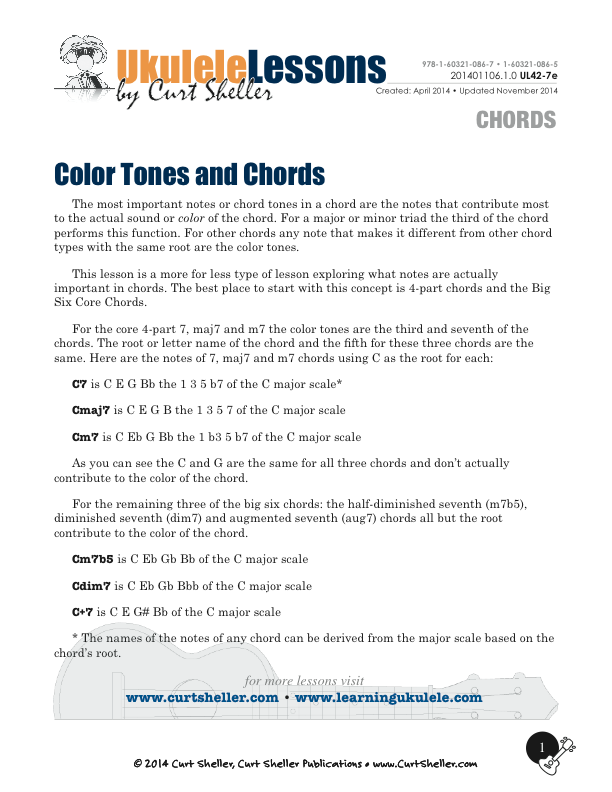
The most important notes or chord tones in a chord are the notes that contribute most to the actual sound or “color” of the chord. For a major or minor triad, the third of the chord performs this function. For other chords, any note that makes it different from other chord types with the same root are the color tones.
This lesson is a more for less type of lesson exploring what notes are actually important in chords. The best place to start with this concept is 4-part chords and the Big Six Core Chords.

A "Triad" is a three note chord. In traditional chord theory there are four traditional triad chord types: major, minor, diminished and augmented. And four contemporary triad chord types: sus2, sus4, add2 and add9. Triads can be used harmonically, as chords and melodically, as single notes. Triads are a great way to get started with creating melodic solos and improvising.

"Core Chords" are a concept that I typically apply to 4-part chords and your more contemporary modern chords. This where a solid foundation of a core set of chords really help in learning the massive amount of chords that are required for play contemporary music or jazz on ukulele or guitar. Not such a task on ukulele with on one four string set of strings to build your 4-part chords vs. the theoretically possible 15 sets available for guitar.
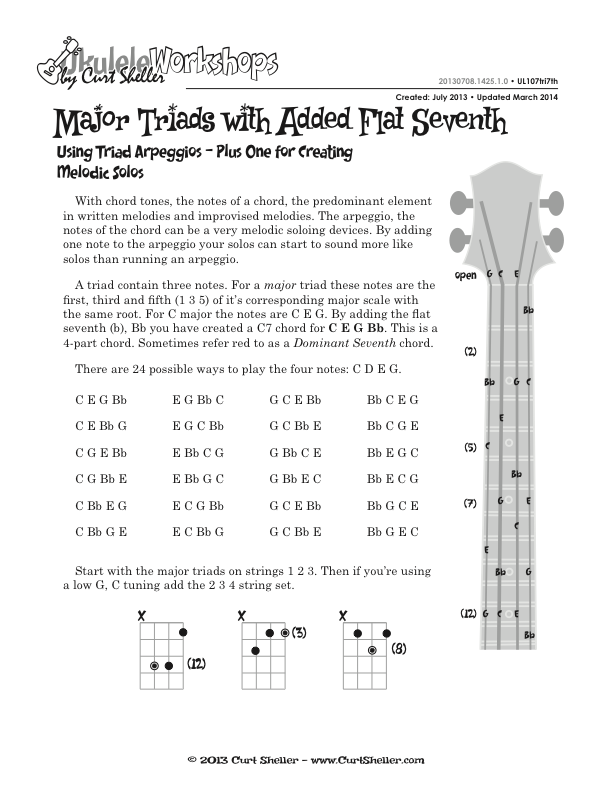
Building on the Major Triad Arpeggios - Plus One for Creating Melodic Solos lesson you can add a b7 to a major triad for a 4-part Seventh chord. With chord tones, the notes of a chord playing a predominant role in writing melodies and in improvised melodies. The triad plus one additional note is a great melodic device for creating melodies - either written or improvised.
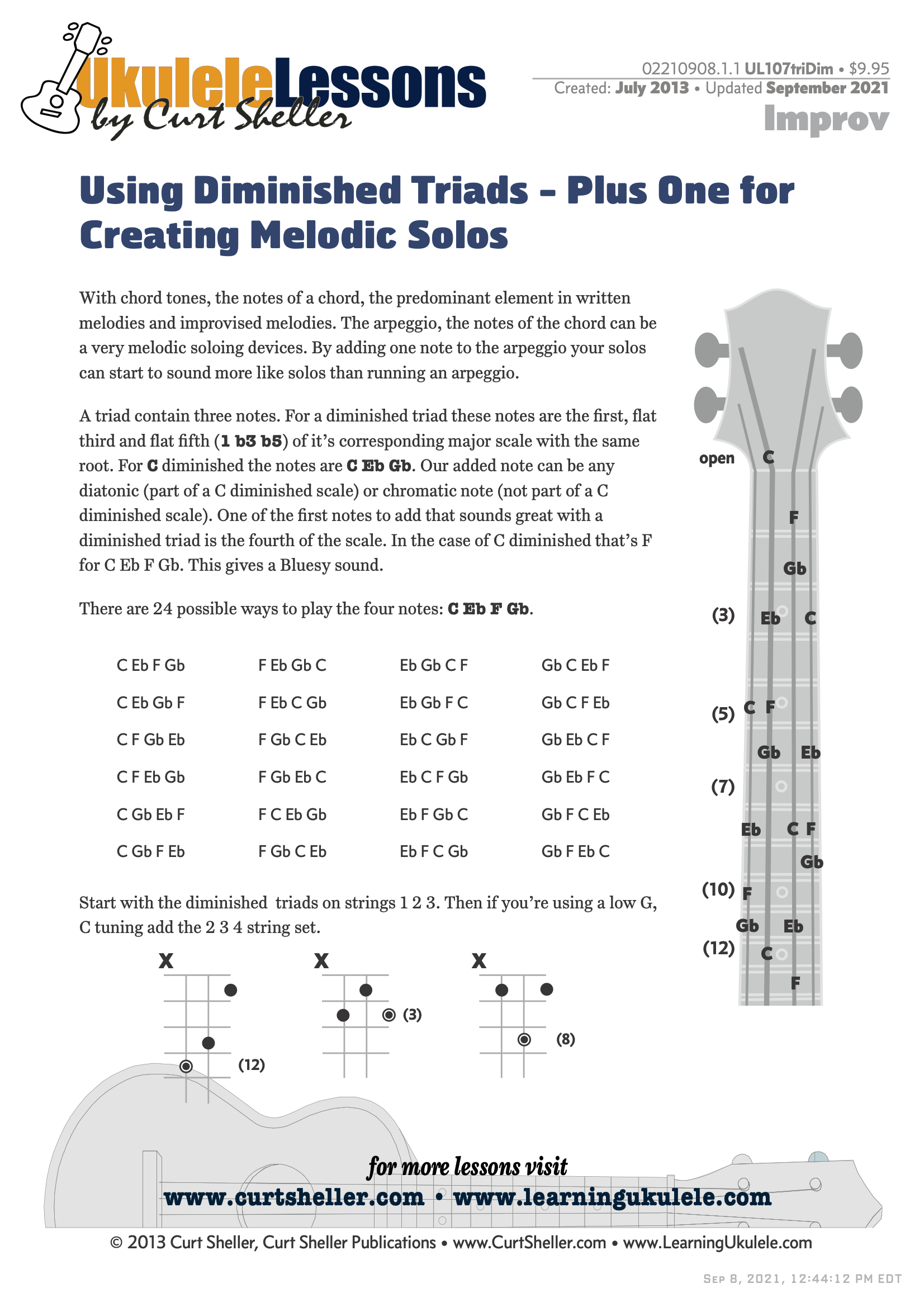
Using Diminished Triad Arpeggios - Plus One for Creating Melodic Solos. With chord tones, the notes of a chord playing a predominant role in writing melodies and in improvised melodies. The triad plus one additional note is a great melodic device for creating melodies - either written or improvised.

Using Augmented Triad Arpeggios - Plus One for Creating Melodic Solos. With chord tones, the notes of a chord playing a predominant role in writing melodies and in improvised melodies. The triad plus one additional note is a great melodic device for creating melodies - either written or improvised.

Exploring major triads using the primary chords of D major. Triads are one of the first chords that really bring to light the need to know the notes of the neck. This lessons shows the three voicings and the solutions for playing a common 1 4 1 5 progression using D, G and A triads on the string 1 2 3 set.
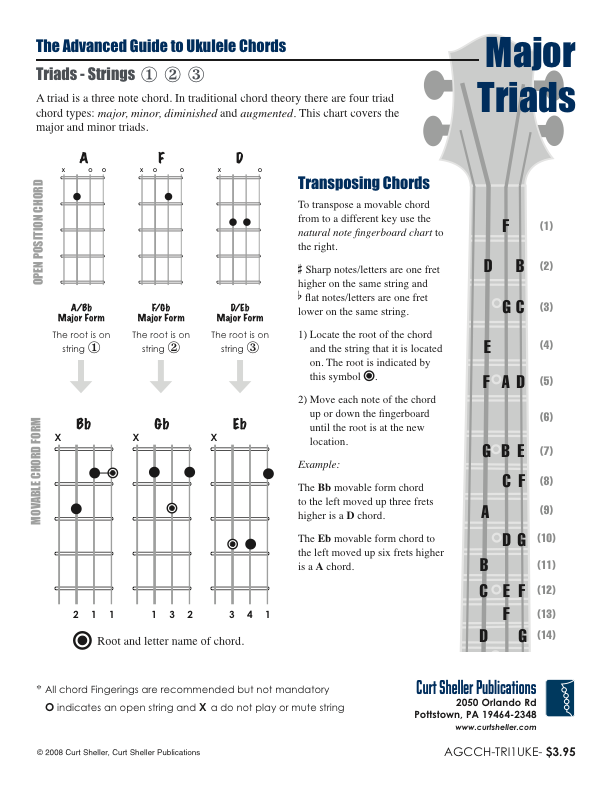
These chords are movable, three note chord forms. The triad is the chord

For Lesson Eight we'll add and build on the lesson and material from lesson four.



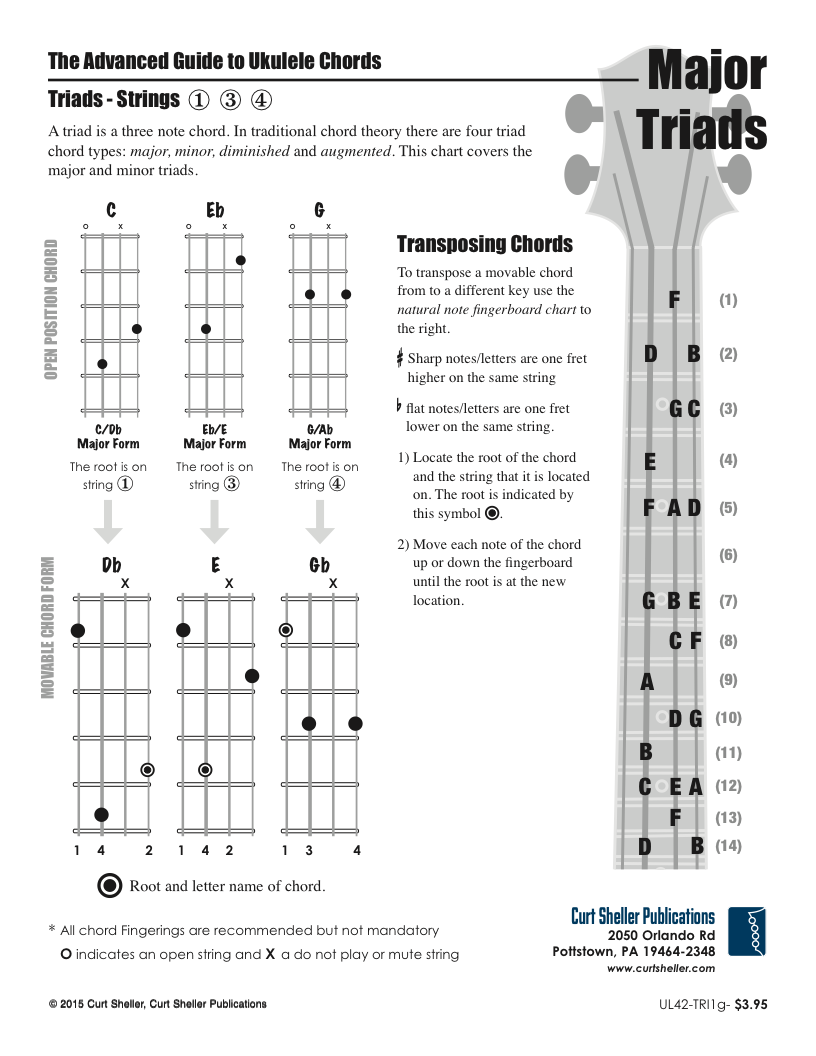
.jpg)